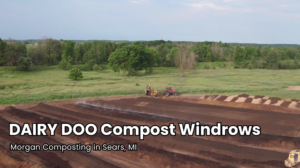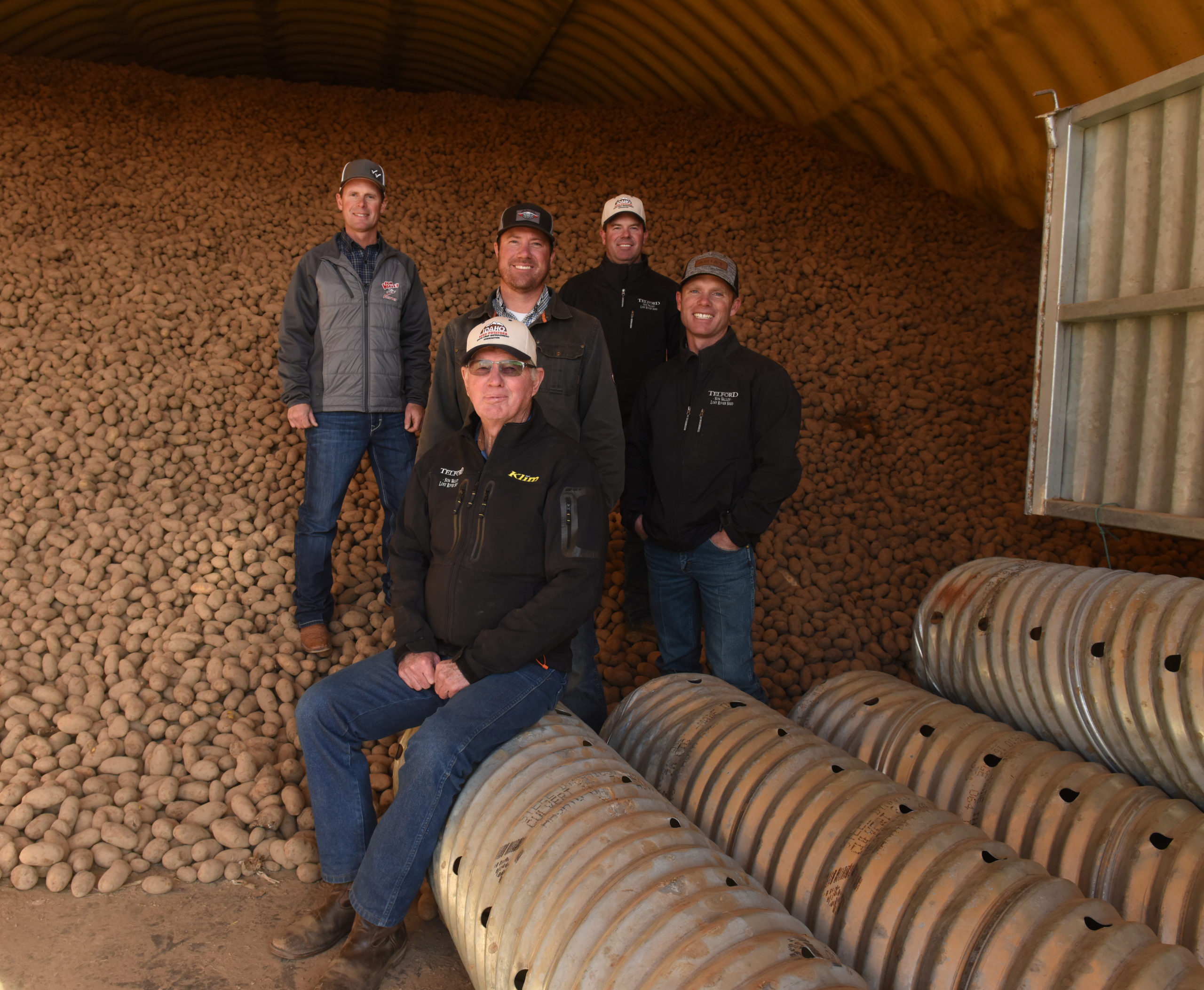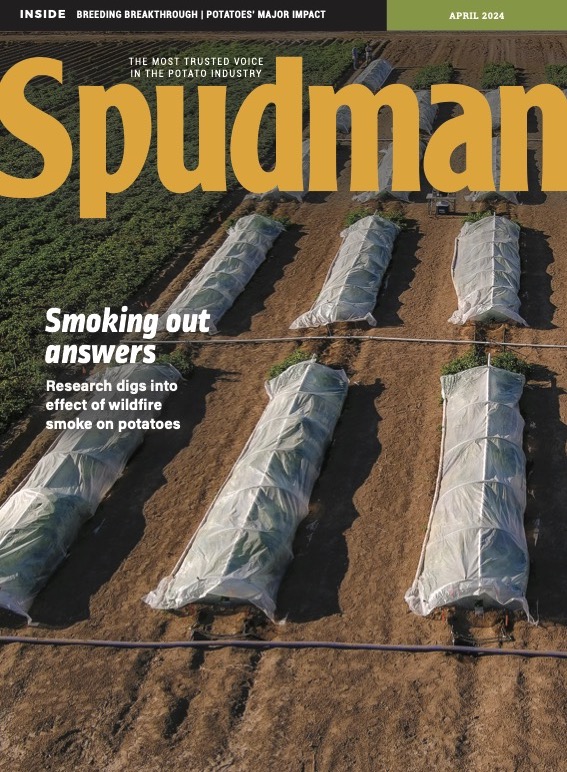Timing is key for weed control between potato planting, row closure
From potato planting to row closure is a busy time for growers. It’s also a busy time for weeds. Getting the herbicides on at the right time and linking up with tillage operations between planting and row closure is the key for weed control from start to finish. Time from planting to emergence can be three to four weeks and, from emergence to row closure, four to five weeks.
Here’s why timing matters.
University of Idaho research shows that a 5% or greater U.S. No. 1 yield loss will occur if hairy nightshade is not controlled from a few days after potato emergence to 22 days later (two hairy nightshades per meter row). If only 1 per m row competes all season-long, then as much as 21% U.S. No. 1 yield is lost.
- Using an integrated weed management strategy will provide the best weed control in potatoes: cultural, mechanical, chemical, and biological tools available for weed control, rather than relying on any single weed control tool.
There are different approaches to tillage-timing out there and this article will concentrate on two. Both use a hilling/reservoir tillage operation.
- Reservoir tillage is sometimes referred to by one of the brand names, Dammer Diker.
- For both scenarios, the reservoir tillage equipment is set up to hill at the same time.
- Some operators attach a sprayer to the back of the tillage equipment and sprinkler-incorporate the herbicides (Figure 1).
- Regardless of scenario, the hilling-reservoir tillage operation is the last one to be performed until harvest.
(Proper hilling timing information is provided at the end of this article.)
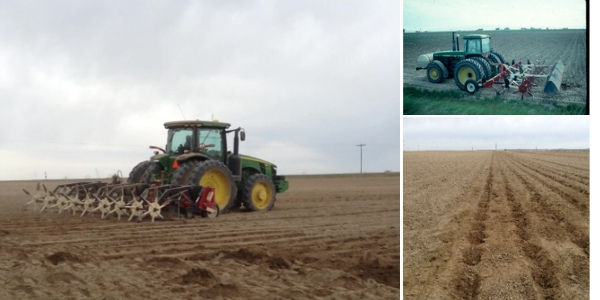
Read and follow the herbicide label
Tank-mix herbicides with different mechanisms of action in order to attain broad spectrum weed control and prevent or delay the development of herbicide-resistant weed populations. Design herbicide tank-mixes to target the weeds present in a given field. Rotate herbicide mechanisms of action from year-to-year.
Scenario 1
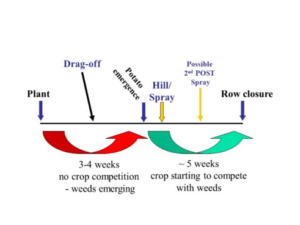
“Drag-off” before potato emergence and a “hilling-reservoir tillage” operation after potato emergence. Postemergence herbicides are applied after that hilling. Figure 2.
- Drag-off is with a harrow or similar equipment to “knock down” the moderate hill that was built at planting so that seed piece is closer to surface. The field is leveled, however, and unless a precision planter with GPS features is used, the final hilling-reservoir tillage cannot occur until after potato emergence when the rows can be seen.
- Drag-off and hilling can control weeds which have already emerged. Some herbicides can even be incorporated with a shallow tillage operation with care taken to not damage the seed piece or potato shoots close to the surface.
- However, as mentioned, tillage after herbicides already have been applied will disrupt the herbicide barrier.
- Effective means of herbicide application after hilling-reservoir tillage: Chemigation; attaching a spray boom to the back of the equipment then sprinkler incorporating; use of sprayers designed to be driven across the field which has had reservoir-tillage but maintains a level spray boom for even distribution of the herbicide.
- If herbicides to be used only have soil activity, then application should occur as soon after that postemergence hilling as possible.
Herbicides which can be used for Scenario 1 (application after potato emergence)
Rimsulfuron (Matrix and others)
- Can controls both emerged and non-merged weeds.
- Best when weeds less than 1 inch tall.
- Split postemergence + postemergence application allowed.
- Can also be applied preemergence + postemergence.
Metribuzin (multiple trade names)
- Can control emerged weeds and non-merged weeds.
- Best when weeds < 1 inch tall.
- Preemergence + postemergence split applications are labeled.
- Postemergence + postemergence split applications are allowed in Idaho, Oregon, and Washington only.
(Note: Some potato varieties cannot tolerate metribuzin.)
EPTC (Eptam)
- Does not control emerged weeds.
- Highly volatile, so if applied with a ground-rig rather than chemigation, it must be incorporated (sprinkler-incorporation is preferred) the same day as application.
Pendimethalin (Prowl H2O and others)
- Does not control emerged weeds.
- Early postemergence up to the 6-inch stage of potato growth allowed.
- Note: Can be applied at drag-off, however, subsequent tillage will disrupt the herbicide layer and weeds can emerge.
S-metolachlor (Dual Magnum)
- Does not control emerged weeds.
- Postemergence chemigation through center pivot is allowed.
- Postemergence application may be applied over a previous application.
Boundary, a formulated mix of s-metolachlor + metribuzin.
- Metribuzin in this product can control emerged weeds.
- Tank-mixing with additional metribuzin is allowed as long as rate limits and label specifics are followed.
Metolachlor (Stalwart and others)
- Does not control emerged weeds.
Postemergence grass control only with sethoxydim (Poast or Poast Plus and others) and clethodim (Select and others).
- Do not chemigate these postemergence, grass-only herbicides.
Scenario 2
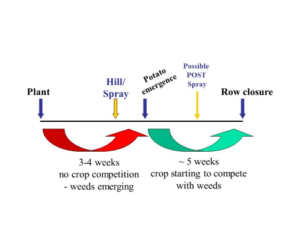
No drag off. Hilling-reservoir tillage operation before potato emergence which is then followed by herbicide application also before potato emergence. A subsequent postemergence herbicide application may be necessary. (See Figure 3.)
- The hilling-reservoir tillage in this scenario can be performed any time after planting but before potato emergence.
- Regardless of timing, a “clean bed” is created because emerged weeds can be controlled with this operation.
- Now, herbicides which can only be applied preemergence can be used for Scenario 2.
- Herbicide application should occur as soon after the hilling as possible to be effective.
- Incorporate all preemergence-applied herbicides as soon after application as possible to activate the herbicide. If applied by ground, rain or sprinkler irrigation must occur for incorporation and activation in the top two-inch layer of soil where most weed seeds germinate.
- Example of Outlook + Linex applied in this scenario is shown in Figure 4.
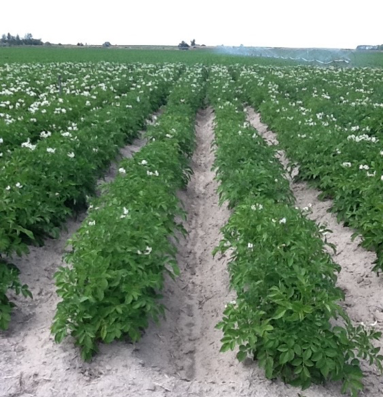
Preemergence-only herbicides for Scenario 2
Dimethenamid-p (Outlook)
Ethalfluralin (Sonalan)
Flumioxazin (Chateau)
- Chateau should be applied as early as possible after planting because at least 2 inches of settled soil covering the potato sprouts at application (and incorporation) time is required.
Fomesafen (Reflex)
- For use in potatoes grown with overhead irrigation only. Only for use in Idaho, Washington and Oregon with Special Local Needs 24 (c) labeling. Check your state for labels and label expiration dates.
Trifluralin (Treflan and others)
Linuron (Linex or Lorox and other trade names)
- Linex has some activity on emerged weeds, however, must be applied before potato emergence to avoid injury.
- For Linex on potatoes grown west of the Rocky Mountains: Idaho, Washington and Oregon currently have Special Local Needs 24 (c) labels. Check your state for label expiration dates and other restrictions.
Sulfentrazone (Willowood Sulfentrazone 4SC and others)
- Caution: Highly mobile in soils with pH of 7.5 or greater and/or sprinkler incorporation with highly alkaline water, especially if soil is also coarse-textured, may increase the amount of herbicide available in the soil solution — good for weed control, however, increased availability could cause crop injury. Use the lowest rate for your soil texture and pH.
- A formulated pre-mix of sulfentrazone and metribuzin (Willowood MTZ 4SC)
Subsequent postemergence herbicide application may be necessary
Scenario 1 may need a second postemergence herbicide application. Scenario 2 might need a postemergence herbicide application in addition to the preemergence application because of heavy weed pressure, late-germinating weeds, and/or the first application did not have activity on certain weed species.
-
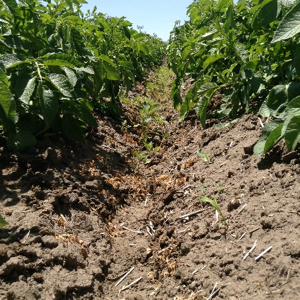
Figure 5. Metribuzin was applied postemergence to the weeds and potatoes as described for Scenario 1, but some of the weeds were too large at application time to be controlled. In addition, metribuzin is not effective on hairy nightshade. Matrix and/or metribuzin are commonly used in this instance since they can be applied postemergence to the potatoes and have activity on emerged weeds.
- Timing in relation to weed size and herbicide choice is extremely important. Example of metribuzin applied postemergence pictured in Figure 5.
Burndown herbicides for weeds emerged before potato emergence and before or after drag-off and/or hilling-reservoir tillage?
- Glyphosate, paraquat, and/or carfentrazone (Aim) are labeled in potatoes.
- Have only foliar activity only (no soil residual activity).
- Must be applied before potatoes emerge (even before cracking).
- Tillage after application is okay, however, an appropriate amount of time for the herbicides to work must occur before that tillage.
Proper hilling timing to control weeds
University of Idaho studies have shown that when weed populations are low and a competitive potato variety is grown, cultivating when weeds are small and potato plants are 4 to 6 inches tall can provide economical weed control.
However, hilling potatoes larger than 8 to 10 inches tall can cause root-pruning and reduced tuber yields and quality.
Multiple cultivations may cause soil compaction, reducing aeration and potato growth and producing clods that bruise potatoes at harvest.
Tillage after herbicides already have been applied will disrupt the herbicide barrier and bring up untreated soil, and perhaps, additional weed seed.
Properly timed cultivations can control early germinating, annual weeds not larger than two to three leaf, which is usually < 1 inch-tall, at the time of cultivation (Figure 6 below).
- 3- to 4-inch tall weeds can sometimes still be eliminated, however, when > 4 inch, then cultivation is not effective (Figure 7 below).
- Even though large weeds are initially covered with soil during a cultivation, they can survive and re-emerge.
- If soil is wet, cultivation should be delayed so that compaction does not occur and weeds can’t “re-root” in the wet soil.
- In-row weeds will most likely not be controlled with the hilling-reservoir.
Summary
Timing matters. Coordination of properly timed tillage operations and herbicide applications is critical for successful, season-long weed control. Weed-size matters. Effective weed control measures should be implemented before potato row closure. Allowing weeds to remain for as long as three weeks after potato emergence can result in yield loss.
- Matrix and metribuzin are the only herbicides which are safe to emerged potatoes and have foliar activity on emerged broadleaf weeds.
- Otherwise, only Prowl H2O (or 3.3EC), Eptam, Dual Magnum or Stalwart can be applied to emerged-potatoes safely — they won’t kill emerged weeds, however. Boundary, the mix of metribuzin and s-metolachlor can also be applied after potatoes emerge and does have some activity on emerged weeds.
- Preemergence to potatoes only — Chateau, Linex, Outlook, Sonalan, Sulfentrazone, Treflan and Reflex (where labeled for use).
- “Burn-down” herbicides such as glyphosate, Aim, or paraquat can also be applied preemergence to potatoes. Wait long enough after application before any tillage!
- Tank-mix/rotate herbicides with different mechanisms of action and design tank mixtures to target the weeds present in a given field.


— Pamela J.S. Hutchinson is the associate professor and Potato Cropping Systems Weed Scientist at the University of Idaho’s Aberdeen R&E Center. She can be reached at [email protected].


